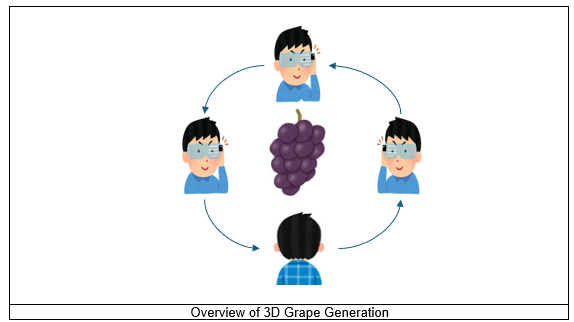Background
Berry thinning is a crucial process for producing high-quality grapes. It significantly influences both the physical appearance of grape bunches, like the shape and berry size and the taste of the berries. Accurately counting the number of berries in a bunch is crucial for effective thinning but challenging for humans to perform precisely. Additionally, deciding which berries to remove requires expert knowledge. Farmers in Japan are facing serious labor shortages and a lack of professional farmers. To address this issue, research has been conducted to transfer the expertise of experienced farmers into deep learning networks, enabling new farmers to efficiently perform thinning. Traditional methods are based on single 2D images, which are limited by the accuracy of berry count estimations and thinning instructions due to unseen berries in the images. To solve this problem, it is necessary to take multiple views of the grapes and reconstruct the bunch’s 3D model.
Methodology
The methodology follows the sequence below:
- Capture images using an HMD (Head-Mounted Display).
- Detect grape berries using a deep-learning model from the images.
- Use the 2D positional information of the grapes and the position information of the HMD to display the estimated position of the grapes in 3D.
- Repeat this from multiple viewpoints.
By using the above method, the 3D positional information of grape berries is estimated, and a 3D model of the grapes is created.

